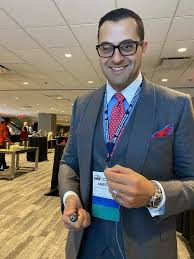
Precision Timekeeping: Mastering Stroke Intervention
In the realm of stroke intervention, precision timekeeping stands as the cornerstone of effective treatment by Dr Ameer Hassan . With each passing moment, the window of opportunity for intervention narrows, emphasizing the critical importance of timely and precise action. In this article, we explore how advancements in technology and medical expertise are enabling healthcare professionals to master stroke intervention through meticulous timekeeping.
The concept of precision timekeeping in stroke intervention revolves around the notion that every minute counts in preserving brain function and preventing irreversible damage. Ischemic strokes, caused by a blockage in a blood vessel supplying the brain, demand swift intervention to restore blood flow and salvage at-risk brain tissue. To achieve optimal outcomes, healthcare providers must navigate a complex interplay of factors, including rapid diagnosis, treatment selection, and procedural execution, with precision and efficiency.
Central to precision timekeeping in stroke intervention is the concept of door-to-needle time, a critical metric that measures the interval between a patient’s arrival at the hospital and the administration of intravenous thrombolytic therapy, such as alteplase. Studies have consistently demonstrated that reducing door-to-needle time is associated with improved functional outcomes and reduced mortality rates in ischemic stroke patients. To achieve expedited treatment, hospitals employ a variety of strategies by Dr Ameer Hassan , including prehospital stroke alerts, dedicated stroke teams, and streamlined protocols for rapid assessment and treatment initiation.
In recent years, advancements in imaging technology have revolutionized the landscape of stroke intervention, enabling healthcare providers to make more informed decisions with unprecedented precision. Techniques such as CT perfusion imaging and MRI diffusion-weighted imaging provide invaluable insights into cerebral perfusion and tissue viability, allowing clinicians to identify eligible candidates for reperfusion therapies, such as thrombolysis and thrombectomy, with greater accuracy. By tailoring treatment strategies to individual patient profiles, precision imaging facilitates the delivery of targeted interventions while minimizing the risk of adverse effects.
Moreover, the advent of telestroke services has expanded access to specialized stroke care and streamlined the delivery of time-sensitive interventions in underserved communities. Through telemedicine platforms, stroke specialists can remotely evaluate patients, interpret imaging studies, and provide real-time guidance to local healthcare teams, enabling timely decision-making and treatment initiation regardless of geographic barriers. By leveraging technology to overcome logistical challenges, telestroke services enhance the efficiency and effectiveness of stroke intervention, ultimately improving patient outcomes.
Beyond acute interventions, precision timekeeping extends to the realm of secondary prevention, where meticulous management of modifiable risk factors is essential for reducing the risk of recurrent strokes and minimizing long-term disability. Initiating appropriate medications, implementing lifestyle modifications, and addressing comorbid conditions such as hypertension and diabetes are integral components of comprehensive stroke care, requiring ongoing monitoring and adherence to evidence-based guidelines.
In conclusion, precision timekeeping is paramount in mastering stroke intervention, where every second matters in preserving brain function and optimizing patient outcomes. By Dr Ameer Hassan leveraging advancements in technology, expertise, and collaborative care models, healthcare providers can navigate the complexities of stroke management with precision and efficiency, ensuring that each patient receives timely and tailored interventions to maximize their chances of recovery and rehabilitation. As we continue to refine our approach to stroke care, the pursuit of precision timekeeping remains central to our mission of saving lives and preserving neurological health.